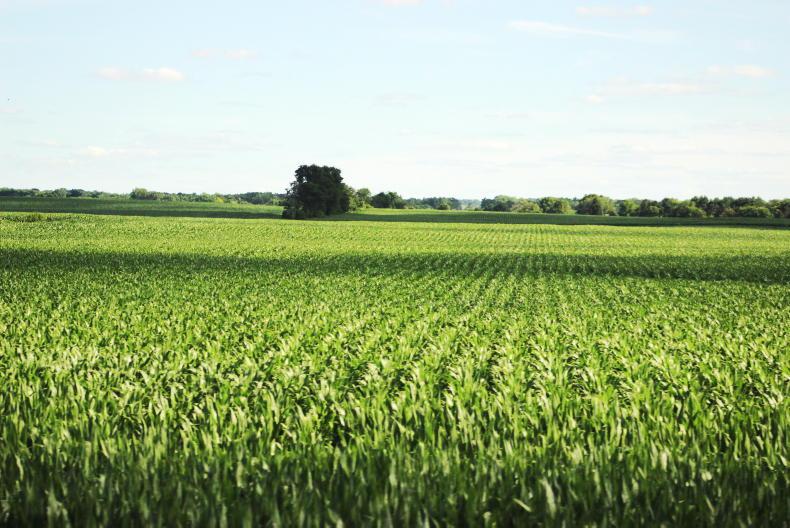The US Farm Bill, the multi-billion-dollar subsidy programme for farmers and consumers, is set to be agreed over the coming months, or else face a cliffhanger at the end of the year. Democrats and Republicans are divided on the Farm Bill, which sets agricultural policy in the United States for the next five years.
The bill is budgeted over 10 years and is estimated to cost US taxpayers over $1.4 trillion dollars (€1.29 trillion).
However, over 80% of the funding within the Farm Bill goes to support low-income families through food stamps and while the Republican party is generally more pro-farming than the Democrats, the size of the Farm Bill is a concern for some fiscally conservative Republicans, who see the food stamps programme as adding to inflation and too much market interference by the government.
A bill has been agreed at the House of Representatives agriculture committee, chaired by Republican congressman for Pennsylvania, Glenn Thompson. Speaking to a group of Irish dairy farmers in Washington DC last week, the deputy staff director of the House Agriculture committee Jennifer Tiller said that they are waiting to put the bill to the floor of the House, which will now happen during the “lame duck” session of Congress. This is the session after the election, but before the new Congress term begins in January.
No bill has as of yet been agreed by the Senate agricultural committee, which has a Democrat majority. This means that there will have to be intensive negotiations on the formation of the Farm Bill after the November election, to avoid a cliffhanger in January.
Key elements
There are two key elements of the Farm Bill: the farm safety net programme and conservation aid. The safety net programme offers livestock and crop farmers margin protection in the event of crop losses or financial downturns, while the conservation element gives farmers financial incentives for undertaking environmentally friendly practices, such as cover crops. Tiller says that $130bn (€120bn) will be spent on food stamps annually, while just $5bn (€4.62bn) will be spent on safety net and conservation. The last time Congress added money to the safety net programme was in 2002; since then, due to inflation and budgetary cuts in 2014, the commodity safety net budget has been effectively cut by 70%, while the budget for food stamps has increased by seven times.
The US Farm Bill, the multi-billion-dollar subsidy programme for farmers and consumers, is set to be agreed over the coming months, or else face a cliffhanger at the end of the year. Democrats and Republicans are divided on the Farm Bill, which sets agricultural policy in the United States for the next five years.
The bill is budgeted over 10 years and is estimated to cost US taxpayers over $1.4 trillion dollars (€1.29 trillion).
However, over 80% of the funding within the Farm Bill goes to support low-income families through food stamps and while the Republican party is generally more pro-farming than the Democrats, the size of the Farm Bill is a concern for some fiscally conservative Republicans, who see the food stamps programme as adding to inflation and too much market interference by the government.
A bill has been agreed at the House of Representatives agriculture committee, chaired by Republican congressman for Pennsylvania, Glenn Thompson. Speaking to a group of Irish dairy farmers in Washington DC last week, the deputy staff director of the House Agriculture committee Jennifer Tiller said that they are waiting to put the bill to the floor of the House, which will now happen during the “lame duck” session of Congress. This is the session after the election, but before the new Congress term begins in January.
No bill has as of yet been agreed by the Senate agricultural committee, which has a Democrat majority. This means that there will have to be intensive negotiations on the formation of the Farm Bill after the November election, to avoid a cliffhanger in January.
Key elements
There are two key elements of the Farm Bill: the farm safety net programme and conservation aid. The safety net programme offers livestock and crop farmers margin protection in the event of crop losses or financial downturns, while the conservation element gives farmers financial incentives for undertaking environmentally friendly practices, such as cover crops. Tiller says that $130bn (€120bn) will be spent on food stamps annually, while just $5bn (€4.62bn) will be spent on safety net and conservation. The last time Congress added money to the safety net programme was in 2002; since then, due to inflation and budgetary cuts in 2014, the commodity safety net budget has been effectively cut by 70%, while the budget for food stamps has increased by seven times.






 This is a subscriber-only article
This is a subscriber-only article










SHARING OPTIONS: